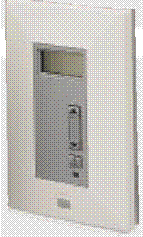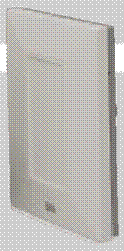FAQs about Temperature
How do the buildings get heated and cooled?
Your campus has a central heating plant, with massive hot water boilers. The water heated in these boilers is circulated through a system of pipes, pumps, valves, coils and heat exchangers to warm the air and the water in most of the buildings on your campus.
Some areas are cooled by air conditioning systems – either massive central cooling plants or smaller package units. Similar to the heating systems, the cooling systems chill the water and circulate it through a system of pipes, pumps, valves and coils to cool the air in those spaces served.
Does fresh air get into the buildings?
Absolutely! Each building has huge fans that circulate air for ventilation. There is always a minimum amount of outside air being brought indoors, so that oxygen levels are maintained within the buildings. Some air is constantly exhausted out, so that carbon dioxide levels are not exceeded. All the air coming in from the outside is filtered.
Depending on the temperature of the outside air vis-à-vis the programmed building temperature, the heating /ventilating /air conditioning /refrigeration (HVAC/R) system automatically adjusts the amount of outside air entering the building.
-
In “fresh air mode”, outside air with a favorable temperature is brought into the building instead of mechanically heating or cooling the air already inside the building. Fresh air mode maintains occupant comfort levels, and it is energy efficient.
-
In “recirculation mode”, the temperature of the air inside the building is more favorable than the air outside. The HVAC/R system minimizes the amount of outside air intake, and recirculates the already-tempered air within the building (except for the minimum fresh air intake required per code and OSHA, which is constantly being drawn in). Recirculation mode maintains occupant comfort levels, and it is energy efficient.
When is the HVAC system scheduled to be on?
The HVAC/R systems are scheduled to operate during times of regular occupancy. Generally, our buildings are occupied Mondays - Fridays 8:00am – 10:00pm, and Saturdays 9:00am – 4:00pm. There are some buildings that deviate from this schedule. The HVAC/R system actually starts working prior to occupancy, so that the programmed air temperature has already been achieved when the first person enters the building.
What if I want the HVAC/R system to come on when it is not scheduled to?
If you have scheduled an event during non-occupancy hours, and would like the HVAC/R system to be on, please contact your campus Facilities Office. They can program the HVAC/R system to come on during your event.
Can I adjust the temperature in my space?
Maybe.Individual temperature adjustment is possible for short durations of time if there is an override digital sensor in your “zone”. Zones are areas of HVAC that are controlled by a single sensor. Override sensors are generally installed in offices, classrooms and conference rooms. A non-override sensor cannot be adjusted by individuals at their zone; non-override sensors are generally installed in corridors, lobbies, gymnasia, and assembly areas.
If there is an area whose temperature you would like to permanently modify to a warmer or cooler set point, please contact your campus Facilities Office.
How do I adjust my override sensor?
| An override sensor looks like this: | A non-override sensor looks like this: |
 |
 |
To adjust the temperature up, Under normal operation, the LED screen will be blank. You can adjust the temperature set point up, 1 - 2°F, by pressing the + end of the toggle button. Each press of the toggle will modify the set point by 1 F for 2 hours, it will automatically return to its programmed set point. A red light will come on indicating the sensor is in override mode.
To adjust the temperature down, Similarly, you can adjust the temperature set point down by 1 - 2°F for up to 2 hours, by pressing the “-“ end of the toggle switch. The red light will appear, indicating the sensor is in override mode, and it will return to its programmed set point after 2 hours.
The temperature set point on a non-override sensor cannot be adjusted by individuals in the HVAC zone. If there is an area whose temperature you would like to permanently modify to a warmer or cooler set point, please contact your campus Facilities Office.